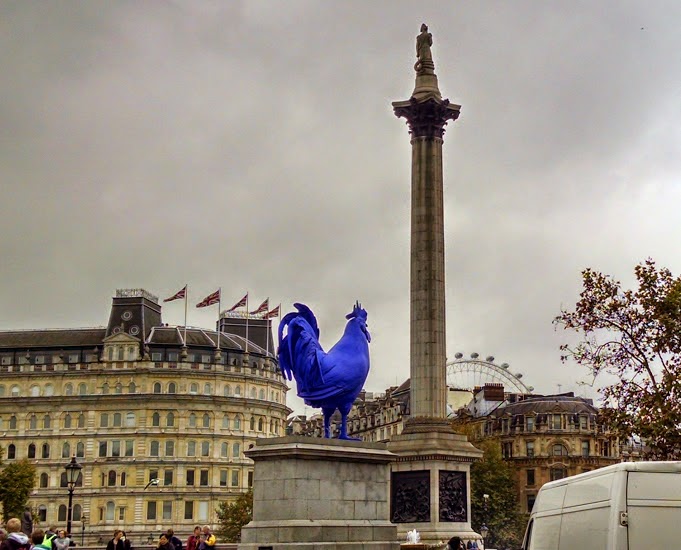Somewhere between the boy hero of Disney studios and the dangerous, complicated lead of Brom's
The Child Thief lies the real Peter Pan.
J. M. Barrie's original Peter is neither the spirit of sweetness nor the incarnation of malice. This Peter is nothing more or less than a small boy who is static, unchanging, embodying both the innocence and heartlessness of a child who doesn't grow up and therefore never learns to be kind.
Peter himself says, "I'm youth, I'm joy, I'm a little bird that has broken out of the egg." To an extent, that's true, and it's long been a popular way of considering him. Unfortunately, this charm is tempered with a lack of practicality and ability to exasperate, as the Darling children see over and over on their flight to Neverland.
Barrie tells us how Peter acquires food for himself and the others by stealing it from the beaks of passing birds, which John and Michael find delightful.
But Wendy noticed with gentle concern that Peter did not seem to know that this was rather an odd way of getting your bread and butter, nor even that there are other ways.
One of Peter's more alarming traits manifests when the children fall asleep from exhaustion and tumble through the sky.
Eventually Peter would dive through the air, and catch Michael just before he could strike the sea,and it was lovely the way he did it; but he always waited till the last moment, and you felt it was his cleverness that interested him and not the saving of human life.
And he's never completely trustworthy.
Indeed, sometimes when he returned he did not remember them, at least not well. Wendy was sure of it. She saw recognition come into his eyes as he was about to pass them the time of day and go on; once even she had to tell him her name.
He was very sorry. "I say, Wendy," he whispered to her, "always if you see me forgetting you, just keep on saying 'I'm Wendy,' and then I'll remember."
Carelessness is integral to Peter's character, as is the way he tries on identities. On one level, Peter wants to be a captain, wishes to play at being a father. But he wants these roles never to be truly real.
I was just thinking," he said, a little scared. "It is only make-believe, isn't it, that I am their father?"
"Oh yes," Wendy said primly.
"You see," he continued apologetically, "it would make me seem so old to be their real father."
"But they are ours, Peter, yours and mine,"
"But not really, Wendy?" he asked anxiously.
"Not if you don't wish it," she replied; and she distinctly heard his sigh of relief.
He inhabits his roles briefly, and they leave no real impression upon him. It's as if everything is make-believe, including the consequences of his actions.
He often went out alone, and when he came back you were never absolutely certain whether he had had an adventure or not. He might have forgotten it so completely that he said nothing about it; and then when you went out you found the body; and on the other hand, he might say a great deal about it, and yet you could not find the body.
Peter has the callousness of the child who doesn't understand death, or the fact that people have lives and concerns of their own that have nothing to do with him."I forget them after I kill them," he says of the pirates in Neverland. Because Peter Pan can be heartless--with his indifference towards those he kills, and the way he "thins out" the population of lost boys as they become older--it's easy to see where the dark interpretations come from. But this is a simple interpretation of a much more complex character.

Peter even forgets Tinker Bell after the Darling children leave Neverland and the fairy dies of old age. Most people aren't real to him once they pass off the screen of his immediate life, Wendy being the exception, and that not complete. "Being present" is held up as a high ideal in our culture, but Peter warns of the risks that come if one disregards the richness and depth that present and past bring to existence. His is the peril of the child who refuses to learn and mature.
John and Michael forget about their parents during their time in Neverland, much to Wendy's distress. She is the only one mature enough to realize what is happening, and her attempts to keep those memories alive make up a significant part of Barrie's book. In contrast, the lost boys, who have no such memories to draw upon, do their best to construct pasts for themselves.
Peter's world is one of adventure and novelty and joy. And yet, he cries sometimes in the night, and is at least as unsettled than triumphant when he takes over the captainship of the
Jolly Roger. On some level, he knows all is not right with the way he has chosen to live. The scene where the Darling children return home brings into relief what Peter has lost in his refusal to grow up.
There could not have been a lovelier sight; but there was none to see it except a strange boy who was staring in at the window. He had ecstasies innumerable that other children can never know but he was looking through the window at the one joy from which he must be forever barred.
And herein lies the essential sadness of Peter Pan. Courageous in facing the dangers he sets up for himself to defeat, and yet so fearful of the prosaic unknown he does everything he can to avoid it. In the end, he is more lost than the boys who follow him.

































